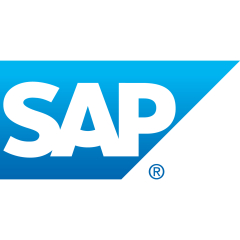SAP used to provide two tools, SAP BI and SAP BPC. The SAP BI tool provided analytics, while the SAP BPC tool provided budgeting and planning functionality. However, We later consolidated these two tools into one tool, SAP Analytics for Cloud. This tool provides both budgeting and analytics functionality.
I have seen a lot of benefits from using SAP Analytics, but I think people have not yet fully realized its potential. I believe the system is still in its revolutionary stage because it has a lot of capabilities that have yet to be fully explored. In order to take advantage of these capabilities, we need to have a business story and our own analytics or business analytics requirements. I myself have only used SAP Analytics for a very small use case, but I can see how it could be used for enterprise-level planning, reporting, and dashboarding.
The most valuable feature of the tool is machine learning. The machine learning algorithms are inbuilt and strong. I really like that feature because we don't need to do any coding. Normally, we used to do coding in Jupyter notes or Anaconda. It's another tool for analytics or for data science. We used to write Python code, and then try to fetch the data from the backend system, and perform the analysis, based on the batch. SAP Analytics is more real-time analytics and the use case which I use the tool for, with S/4HANA itself. SAP Analytics makes it much easier for me to have the data directly in real-time, to perform this machine learning. I have also seen some good automation features for budgeting and budgeting processes. This combined feature gives a very good flavor to perform the analytics.
SAP has always had one problem with its products, they make them very closed systems that are difficult to integrate. This is not only a problem with SAP Analytics but also with other products, like middleware systems. These systems, such as GRC, reside in the second level of defense, rather than the first. All these analytical systems normally require a huge integration, because they are not working independently. They are dependent on the backend systems. In any analytical system, we don't have data. Basically, we fetch the data or we try to take the data from any recording system such as an ERP recording system, CRM recording system, or any recording system. We perform the analysis in the analytical layer, which is our analytical tool, such as frauds, business integrated screening, SAP GRC, or even the SAC, SAP Analytics for Cloud. All of these require a huge integration. The problem I faced with SAP Analytics was the ease of integration and the cost. SAP Analytics for Cloud is not cost-friendly. we encounter the same issue with all SAP tools. Although SAP has a very beautiful and seamless integration within their system, it is not as easy to integrate them with non-SAP tools, as our Enterprise system does not have all SAP systems. They instead have multiple systems, including Oracle and Microsoft systems. Even though SAP has very beautiful plugins, which we can utilize and get benefit from that, it is not as friendly compared to other tools.
In 2012 or 2013, SAP's interfaces were a big challenge because they were very engineering-oriented and dry, making them difficult for business users to understand. Fiori was introduced as a solution to this problem, and it has been successful in doing so. However, I believe that SAP still needs to work on the integration aspect.
SAC is not the number one tool for analytics. However, if an organization has SAP backend products, then SAC falls within the system of analytics. The system of analytics requires a system of recording, which is the ERP system, CRM, or any other backend system that automates business processes. I believe that a little work is required in that aspect by SAP to improve.
I have been using the tool for several years.
I give the scalability a nine out of ten.
Most of the organizations I work for have a maximum attention licensing agreement with SAP, so the support service is amazing. We've never faced any delays with that.
If we have more backend systems using SAP, it's really easy to set up SAP Analytics, but if that is not the case it becomes very difficult to integrate.
SAP Analytics can be very costly to license, which can make it difficult for organizations to implement.
I evaluated SPSS and Alteryx.
I give the tool a seven out of ten.
I was looking for a tool that could help me add value-added services to my department, such as predictive analytics from the audit perspective. I wanted a tool that could analyze text, mostly based on natural language processing. There are other heavy tools that could be applied to the audit lifecycle to improve the process. I was looking for a data analysis tool that would help me roll out the fifth generation of our internal audit department. I considered several options, including SPSS, Alteryx, and SAP Analytics. There is a generation of auditors and assurance professionals called 4.0 or 5.0 who are turning from performing basic analytics to using advanced analytics tools with AI to enhance their audit processes. They are becoming more proactive and using bottom-up analytics. This is a little bit technical for some people. In the same way that we have fourth-generation audit insurance, we have the fourth industrial revolution in the generic industry, we have a revolution in the audit department, a fourth-generation revolution, where we apply AI tools, RPA, robotic process, and advanced analytics to improve our processors. This allows us to perform more audits, 15-20 instead of 10, and to do so using a complete database rather than samples. As an auditor, we will no longer be providing reasonable assurance that we cannot provide everything, we will be able to provide assurance on the entire database. The analytics will automate this process for us, so I'm launching that strategy. In my strategy, I have, for example, some contracts I want to automate instead of reviewing them manually. Each and every contract, for example, comes to the audit department. Instead of reviewing the contract manually, and spending hours, converting this from the OCR text, and then applying the NLP on it, trying to identify the risks and the threats within this contract, and trying to audit based on that risk template, I can automate this process. I'm a certified professional in GRC and ECC. I've been working in this field for a long time. I've seen predictive analytics in action, and I've tried to compare the effectiveness of different tools, like SPSS and Alteryx, with SAP Analytics. I'm doing this because I want to see how much these tools can help me with my overall strategy. But I know that no single tool can guarantee success. We need a bunch of tools. For example, we have this SAP Celonis, which can help us understand business processes and do business process re-engineering and analysis. This SAP Celonis will help automate the process of understanding business processes, instead of having manual meetings with the business and trying to understand everyone's understanding of the process. We can rely on the data to tell us the truth. The central truth is the data. SAP Celonis will take the event log and try to analyze the process on our behalf, and try to give us the anomalies in our business process. The strategy has a different flavor, different tools, and different aspects. SAP Analytics would be more helpful in the audit execution process, and reporting stage. There is another tool that helps with fraud management. It's called business integrity screening. This tool basically fetches data and tests it for us. The tool also gathers information from SAP Analytics for Cloud and performs predictive analytics with strong machine learning algorithms. SAP Analytics is not the only thing I use to achieve my goals. It is a part of my strategy, and it helps me automate certain aspects of my plan.
An organization that has its backend systems as SAP would be making a smart move to go with SAP Analytics, but if they have a mix of SAP or non-SAP systems, I never advise organizations to go with SAP Analytics. An organization that does not have SAP in the backend and still wished to use SAP Analytics should perform a proper requirement analysis first.




















